 |
 |
Our enthusiastic and extremely knowledgeable perennials team is here to answer your questions and help you choose the best perennials for your situation. There’s always something in bloom for sun, shade, butterflies, birds or deer resistance as well as a variety of bulbs for your space.
Stroll through our time-tested favorites and introduce yourself to the newest varieties. We garden with perennials too; we love them and it shows!
|
23 found, showing page 1 of 2
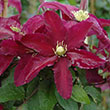
Vigorous large, velvety, deep ruby-red flowers, 6 in across. Tolerate deer and black walnut. USDA 4-11

Long blooming deep reddish purple flowers from late spring to early fall. Compact. USDA 5-9
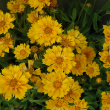
Height: 18 inches
Spread: 18 inches
Sunlight: full sun
Hardiness Zone: 4b
Other Names: Large Flowered Tickseed, Threadleaf
Coreopsis
Description:
Splendid fluted petals with cheery, daisy-like yellow flowers and a central gold disk; tolerant of pests and drier soils; thriving in sandy and rocky soils; coreopsis needs good drainage
Ornamental Features:
Jethro Tull Tickseed is smothered in stunning yellow daisy flowers with gold eyes and curiously fluted yellow tips at the ends of the stems from early summer to early fall. The flowers are excellent for cutting. Its ferny leaves remain emerald green in color throughout the season.
Landscape Attributes:
Jethro Tull Tickseed is an open herbaceous perennial with a mounded form. It brings an extremely fine and delicate texture to the garden composition and should be used to full effect.
This is a relatively low maintenance plant, and is best cleaned up in early spring before it resumes active growth for the season. It is a good choice for attracting butterflies to your yard, but is not particularly attractive to deer who tend to leave it alone in favor of tastier treats. It has no significant negative characteristics.
Jethro Tull Tickseed is recommended for the following landscape applications:
- Mass Planting
- Border Edging
- General Garden Use
- Container Planting
Planting & Growing:
Jethro Tull Tickseed will grow to be about 18 inches tall at maturity, with a spread of 18 inches. Its foliage tends to remain dense right to the ground, not requiring facer plants in front. It grows at a medium rate, and under ideal conditions can be expected to live for approximately 10 years. As an herbaceous perennial, this plant will usually die back to the crown each winter, and will regrow from the base each spring. Be careful not to disturb the crown in late winter when it may not be readily seen!
This plant should only be grown in full sunlight. It does best in average to evenly moist conditions, but will not tolerate standing water. It is not particular as to soil pH, but grows best in poor soils. It is somewhat tolerant of urban pollution. This particular variety is an interspecific hybrid. It can be propagated by division; however, as a cultivated variety, be aware that it may be subject to certain restrictions or prohibitions on propagation.
Jethro Tull Tickseed is a fine choice for the garden, but it is also a good selection for planting in outdoor pots and containers. It is often used as a 'filler' in the 'spiller-thriller-filler' container combination, providing a mass of flowers against which the thriller plants stand out. Note that when growing plants in outdoor containers and baskets, they may require more frequent waterings than they would in the yard or garden.
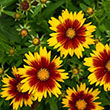
Height: 14 inches
Spread: 14 inches
Sunlight: full sun
Hardiness Zone: 4b
Group/Class: UpTick Series
Brand: Ball
Description:
A tidy, mounded variety, covered with striking, daisy-like yellow flowers with gold eyes and contrasting deep red-purple rings; tolerant of pests and drier soils; thriving in sandy and rocky soils; great as edging, or in containers; needs good drainage
Ornamental Features:
UpTick Gold and Bronze Tickseed is smothered in stunning yellow daisy flowers with orange overtones, gold eyes and a antique red ring at the ends of the stems from late spring to early fall. The flowers are excellent for cutting. Its narrow leaves remain emerald green in color throughout the season.
Landscape Attributes:
UpTick Gold and Bronze Tickseed is an open herbaceous perennial with a mounded form. It brings an extremely fine and delicate texture to the garden composition and should be used to full effect.
This is a relatively low maintenance plant, and is best cleaned up in early spring before it resumes active growth for the season. It is a good choice for attracting bees and butterflies to your yard, but is not particularly attractive to deer who tend to leave it alone in favor of tastier treats. It has no significant negative characteristics.
UpTick Gold and Bronze Tickseed is recommended for the following landscape applications:
- Mass Planting
- Border Edging
- General Garden Use
- Container Planting
Planting & Growing:
UpTick Gold and Bronze Tickseed will grow to be about 12 inches tall at maturity, with a spread of 14 inches. Its foliage tends to remain dense right to the ground, not requiring facer plants in front. It grows at a medium rate, and under ideal conditions can be expected to live for approximately 10 years. As an herbaceous perennial, this plant will usually die back to the crown each winter, and will regrow from the base each spring. Be careful not to disturb the crown in late winter when it may not be readily seen!
This plant should only be grown in full sunlight. It does best in average to evenly moist conditions, but will not tolerate standing water. It is not particular as to soil pH, but grows best in poor soils. It is somewhat tolerant of urban pollution. This particular variety is an interspecific hybrid. It can be propagated by division; however, as a cultivated variety, be aware that it may be subject to certain restrictions or prohibitions on propagation.
UpTick0 Gold and Bronze Tickseed is a fine choice for the garden, but it is also a good selection for planting in outdoor pots and containers. It is often used as a 'filler' in the 'spiller-thriller-filler' container combination, providing a mass of flowers against which the thriller plants stand out. Note that when growing plants in outdoor containers and baskets, they may require more frequent waterings than they would in the yard or garden.

Height: 18 inches
Spread: 24 inches
Sunlight: full sun
Hardiness Zone: 4a
Group/Class: Kismet Series
Description:
Multitudes of glowing, yellow flowers with gold cones, produced on strong stems; blooms from early summer until frost; use in naturalized areas with other native plants; great for borders
Ornamental Features:
Kismet Yellow Coneflower has masses of beautiful lightly-scented yellow daisy flowers with gold eyes at the ends of the stems from early summer to mid fall, which are most effective when planted in groupings. The flowers are excellent for cutting. Its pointy leaves remain green in color throughout the season.
Landscape Attributes:
Kismet Yellow Coneflower is an herbaceous perennial with an upright spreading habit of growth. Its medium texture blends into the garden, but can always be balanced by a couple of finer or coarser plants for an effective composition.
This is a relatively low maintenance plant, and is best cleaned up in early spring before it resumes active growth for the season. It is a good choice for attracting butterflies and hummingbirds to your yard, but is not particularly attractive to deer who tend to leave it alone in favor of tastier treats. It has no significant negative characteristics.
Kismet Yellow Coneflower is recommended for the following landscape applications:
- Mass Planting
- Rock/Alpine Gardens
- Border Edging
- General Garden Use
- Container Planting
Planting & Growing:
Kismet Yellow Coneflower will grow to be about 16 inches tall at maturity, with a spread of 24 inches. Its foliage tends to remain dense right to the ground, not requiring facer plants in front. It grows at a fast rate, and under ideal conditions can be expected to live for approximately 10 years. As an herbaceous perennial, this plant will usually die back to the crown each winter, and will regrow from the base each spring. Be careful not to disturb the crown in late winter when it may not be readily seen!
This plant should only be grown in full sunlight. It is very adaptable to both dry and moist locations, and should do just fine under typical garden conditions. It is considered to be drought-tolerant, and thus makes an ideal choice for a low-water garden or xeriscape application. It is not particular as to soil type or pH. It is highly tolerant of urban pollution and will even thrive in inner city environments. This particular variety is an interspecific hybrid. It can be propagated by division; however, as a cultivated variety, be aware that it may be subject to certain restrictions or prohibitions on propagation.
Kismet Yellow Coneflower is a fine choice for the garden, but it is also a good selection for planting in outdoor pots and containers. It is often used as a 'filler' in the 'spiller-thriller-filler' container combination, providing a mass of flowers against which the larger thriller plants stand out. Note that when growing plants in outdoor containers and baskets, they may require more frequent waterings than they would in the yard or garden.
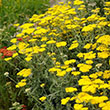
Carefree silver grey, non-spreading, fragrant foliage with canary yellow blooms. Good for containers. USDA 4-8
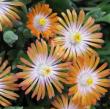
Amber & white blooms. Tolerates dry & poor soils. Succulent, compact, long blooming. USDA 5-10
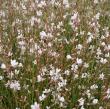
White blooms on red stems. Tolerates poor soils. USDA 5-9
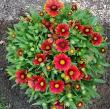
Large, plentiful, early blooms of yellow-tipped red. USDA 3-10
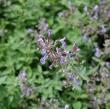
Lavender blooms. Fragrant foliage. Sterile seeds. USDA 5-9
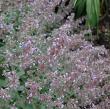
Dense purple blooms. Fragrant. Tolerates deer, dry & poor soils. USDA 3-8
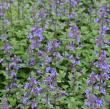
Dark blue blooms. Dwarf. Fragrant mounding foliage. USDA 3-8
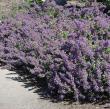
Lavender blue blooms. Fragrant foliage. Naturalizing. USDA 4-8
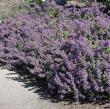
Lavender blue blooms. Fragrant foliage. Naturalizing. USDA 4-8
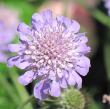
Lavender blooms. Long blooming. Compact. Clump-forming. USDA 5-9
23 found, showing page 1 of 2






